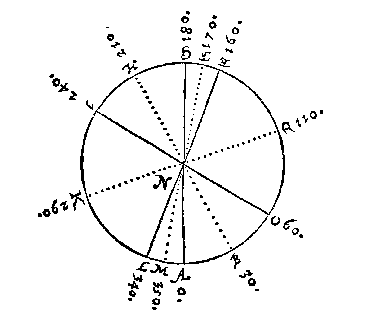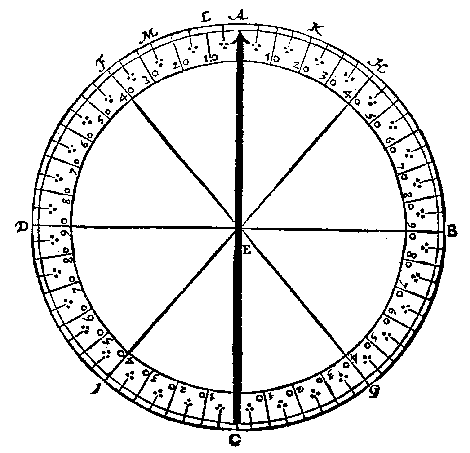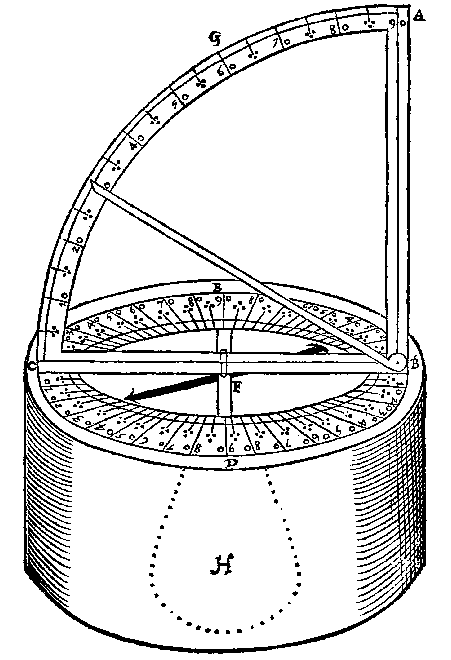|
after a certaine time might assemble themselves.
|
Whereto I may also adioyne a third use of the variation, that is, the reforming of many errors which must needes be in the ordinarie sea-charts, because the coasts of all countries and the courses from place to place, have beene set downe in them by direction of the varying compasse, without abatement or allowance answerable to the variation; wherof there must needes follow much deformitie and confusion in many parts of the chart, especially where the variation is great, as it is upon the coast of Newfoundland; where the variation being two whole points of the compasse (as is reported) there must needes be so much error also in laying out all the sea coast of that countrey, and in the courses of all places neere adioyning in the ordinarie sea charts. All which errors may be amended, if the variations be first truely observed, and then abated from, or allowed to the courses of all places, as neede shall require.
But the variation cannot serve to so great use as otherwise it might, except other errors also aswell in the chart, as in other instruments and meanes of navigation be also avoyded. For the chart as it hath beene hitherto generally made with right-lined rumbes and degrees of latitude every where equall, must needes be very erroneous, especially in the Northerne parts thereof, that although all the foresaid errors arising by the variation were corrected, yet for this cause onely you may bee deceived one, two, yea three whole points of the compasse, in the courses of many places: and in measuring the distance you may erre one halfe, yea three quarters and more sometimes, accounting the same to be twise, yea thrise greater then
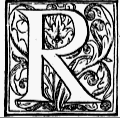 Ight Honourable, being informed by my learned friend and most earnest and effectuall furtherer of Navigation for the common good of his countrey M. Richard Hackluit, upon the dedication of his first volume of discoveries unto your Lor. about a yeere since, of the singular affection your Lor. beareth towardes the advancement of knowledge and skill among our seamen in marine causes; so farre foorth that to the end they might be the more stirred up and holpen this way, your Lor. would not onely be a meane unto her Majestie for the establishing of an ordinary Lecture to be read for their instruction, but also rather then so good a purpose should fall to the ground would be at some charges your selfe for the bringing of it to effect: I conceived no smal comfort upon this report,
Ight Honourable, being informed by my learned friend and most earnest and effectuall furtherer of Navigation for the common good of his countrey M. Richard Hackluit, upon the dedication of his first volume of discoveries unto your Lor. about a yeere since, of the singular affection your Lor. beareth towardes the advancement of knowledge and skill among our seamen in marine causes; so farre foorth that to the end they might be the more stirred up and holpen this way, your Lor. would not onely be a meane unto her Majestie for the establishing of an ordinary Lecture to be read for their instruction, but also rather then so good a purpose should fall to the ground would be at some charges your selfe for the bringing of it to effect: I conceived no smal comfort upon this report,
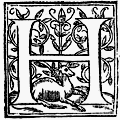 Aving dedicated this litle Booke to the Right Hon. the Lord high Admirall of England, to whom the governement of sea causes next under her Maiestie chiefly appertaineth (with whom also it hath found such favourable acceptation as of so honorable a personage might be iustly espected) I thought it meete in the next place to commend the same to your Wor. societie also, as to them who have best occasion in your so manifold navigations to make most plentifull and sufficient triall thereof, and to whom it may assuredly doe most necessary and profitable service. But least you should stand in doubt of this my commendation, the Right Honourable Count Maurice, Lord high Admirall of the united Provinces of the Low Countries, hath not only commended the same to all Masters of ships and their companies (or brotherhoods as we may call them) that are under his iurisdiction; but hath also commanded them to make diligent and continuall observation in all their voyages, according to the directions prescribed herein. He also, as not content that the fruit which may spring hereof should be conteined within the narrow boundes and compasse of the Lowe Countries, hath caused this booke to be translated into the
Aving dedicated this litle Booke to the Right Hon. the Lord high Admirall of England, to whom the governement of sea causes next under her Maiestie chiefly appertaineth (with whom also it hath found such favourable acceptation as of so honorable a personage might be iustly espected) I thought it meete in the next place to commend the same to your Wor. societie also, as to them who have best occasion in your so manifold navigations to make most plentifull and sufficient triall thereof, and to whom it may assuredly doe most necessary and profitable service. But least you should stand in doubt of this my commendation, the Right Honourable Count Maurice, Lord high Admirall of the united Provinces of the Low Countries, hath not only commended the same to all Masters of ships and their companies (or brotherhoods as we may call them) that are under his iurisdiction; but hath also commanded them to make diligent and continuall observation in all their voyages, according to the directions prescribed herein. He also, as not content that the fruit which may spring hereof should be conteined within the narrow boundes and compasse of the Lowe Countries, hath caused this booke to be translated into the 
 Here is no man, I suppose, that knoweth not with howe great diligence now of a long time (especially since men leaving no part of the world unattempted, have sayled into America, and to the utmost Indies) the searchers out of excellent things have sought some certaine way, whereby they which take charge of ships might know assuredly the situation and longitude of what place soever they would goe unto, and so come to any Haven or place appointed at sea. But I know not how it hath comme to passe, that there could not hitherto any certaine knowledge of that matter be attayned unto. For some when they indevoured to find this thing by the magneticall needle gave the Load-stone it selfe a Pole, which of the Load-Stone (called also the Magnete) they named the magnetical Pole, or Pole of the Load-stone. But that this is otherwise, the thing it selfe hath
Here is no man, I suppose, that knoweth not with howe great diligence now of a long time (especially since men leaving no part of the world unattempted, have sayled into America, and to the utmost Indies) the searchers out of excellent things have sought some certaine way, whereby they which take charge of ships might know assuredly the situation and longitude of what place soever they would goe unto, and so come to any Haven or place appointed at sea. But I know not how it hath comme to passe, that there could not hitherto any certaine knowledge of that matter be attayned unto. For some when they indevoured to find this thing by the magneticall needle gave the Load-stone it selfe a Pole, which of the Load-Stone (called also the Magnete) they named the magnetical Pole, or Pole of the Load-stone. But that this is otherwise, the thing it selfe hath
